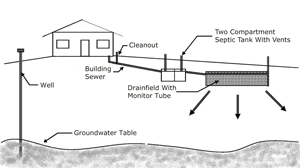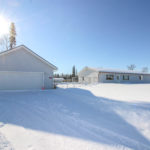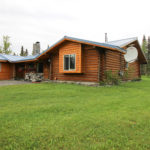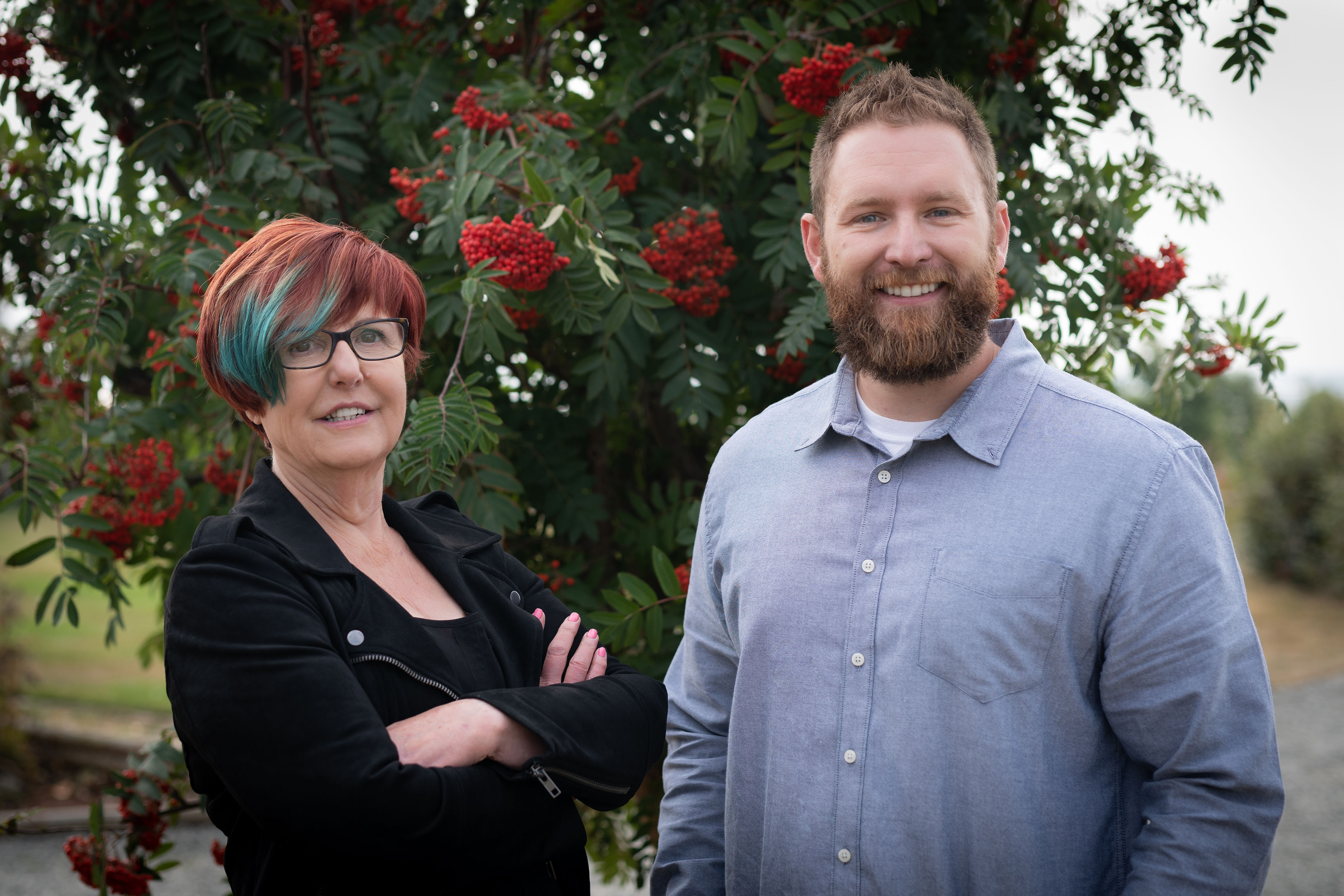For many new to Alaska and the Kenai Peninsula, septic systems are a foreign concept. The vast majority of Americans, at least the ones moving from a city of any size, had city sewer and water. Both the city of Kenai and the city of Soldotna have city sewer and water within the core of the communities, but you often lose access if you are farther than two miles from a stop light, cross the Kenai River or simply don’t live in town. For rural communities with large lots and a dispersed population (The Alaska Kenai Peninsula) septic systems are the only cost effective option. It is estimated that 30% to 40% of the Alaska’s population use a septic system.
The primary purpose of the system is to move human waste out of the house and protect the ground water. During the homestead days of the 50’s and 60’s a wood crib was used to disperse the waste. Wood cribs were popular and cheap. The only problem is that most contaminate the ground water. This was not an issue until the homesteader started to have neighbors who placed a well nearby. Modern septic systems were designed to reduce the impact that your sewage would have on your drinking water. If you have concerns, a local inspector can test the water for contaminants.
So What Is A Septic
The system consists of a septic tank and a drainage field above and separated from the ground water. The septic tank is fairly standard, most importantly it needs to be sized appropriately for the number of bedrooms and baths it will serve. The septic tank’s purpose is to separate the solids from the liquids. Once the liquid waste leaves the tank it moves into the drainage field where it is dispersed, hopefully. There are several types of drainage field designs ranging from trench and engineered mounds to the occasional pit. The big difference between a wood crib and modern engineered septic is the spacing and type of soils and gravels placed in the drainage field to separate the sewage from the water table. This allows an opportunity for the grey water to be filtered by nature’s bugs before it is sucked up by your downhill neighbors well.
When considering a home, make sure that your drainage field is at least 100 feet from your well and your neighbor’s well. It is also a good idea to make sure that your well is at least 100 feet from any surrounding septic drainage fields. If you have questions on septic design check out the State of Alaska Certified Installers Manuel. The local Alaska DEC office in Soldotna can be reached at 907 262 3402.
What is different about Alaska septic systems?
The ground temperature. In the majority of the US the ground temp is in the 60’s. Alaska’s ground temp is in the 40’s four feet below an average lawn. Why is this important? Most types of bacteria can’t survive at this cool of a temperature, so… solids in the holding tank don’t breakdown as fast or at all. Additionally, many companies advertise septic additives to boost the bacteria level in your tanks. What they don’t tell you is that if the temps are below 55 degrees most of their bugs die.
Maintenance
If you recently bought or are buying a home with a septic you need to know the basics of maintaining it. To learn more about what not to put down the drain review “How to destroy your septic”. The most important rules to maintain your septic system are below.
Rule # 1: If you did not personally make it, don’t put it in the septic. The system is designed for human waste only. No food, feminine hygiene products or oils.
Rule # 2: Have your tank pumped at least every year and a half. If you have the money, doing it annually is cheap insurance. Remember Alaska’s ground temp is cool and slows decay. It is not uncommon to have a significant buildup of solids after a year, particularly for a large household.
Rule # 3: For all you tourists and snow birds. Never dump your RV waste tank into the septic holding tank. A septic holding tank is design to accommodate a bath tub of water at a time. A standard RV waste tank will easily flood the holding tank, forcing solids through and into the drainage field, instantly plugging it up. Very bad, very expensive. Alaska DEC requires that most failed systems have the drainage field COMPLETELY replaced. That can run from $6,000 for a deep trench to $20,000+ for an engineered mound.
The State of Alaska DEC has a fairly good site on Alaska septic systems including a list of certified installers.





Leave a Reply